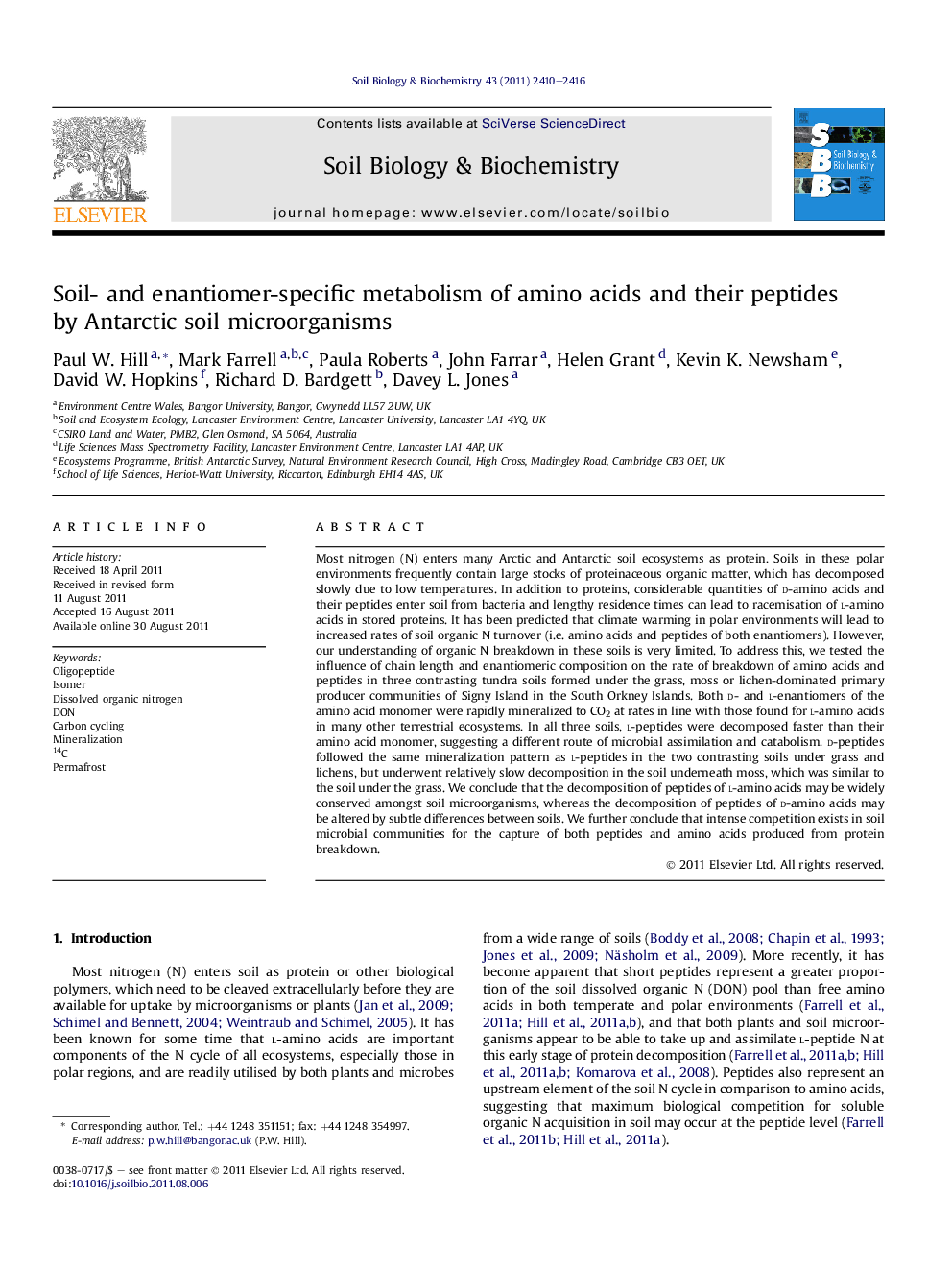| Article ID | Journal | Published Year | Pages | File Type |
|---|---|---|---|---|
| 2025163 | Soil Biology and Biochemistry | 2011 | 7 Pages |
Most nitrogen (N) enters many Arctic and Antarctic soil ecosystems as protein. Soils in these polar environments frequently contain large stocks of proteinaceous organic matter, which has decomposed slowly due to low temperatures. In addition to proteins, considerable quantities of d-amino acids and their peptides enter soil from bacteria and lengthy residence times can lead to racemisation of l-amino acids in stored proteins. It has been predicted that climate warming in polar environments will lead to increased rates of soil organic N turnover (i.e. amino acids and peptides of both enantiomers). However, our understanding of organic N breakdown in these soils is very limited. To address this, we tested the influence of chain length and enantiomeric composition on the rate of breakdown of amino acids and peptides in three contrasting tundra soils formed under the grass, moss or lichen-dominated primary producer communities of Signy Island in the South Orkney Islands. Both d- and l-enantiomers of the amino acid monomer were rapidly mineralized to CO2 at rates in line with those found for l-amino acids in many other terrestrial ecosystems. In all three soils, l-peptides were decomposed faster than their amino acid monomer, suggesting a different route of microbial assimilation and catabolism. d-peptides followed the same mineralization pattern as l-peptides in the two contrasting soils under grass and lichens, but underwent relatively slow decomposition in the soil underneath moss, which was similar to the soil under the grass. We conclude that the decomposition of peptides of l-amino acids may be widely conserved amongst soil microorganisms, whereas the decomposition of peptides of d-amino acids may be altered by subtle differences between soils. We further conclude that intense competition exists in soil microbial communities for the capture of both peptides and amino acids produced from protein breakdown.
► Polar soils have large stocks of protein N. ► Decomposing soil organic matter releases peptides and amino acids. ► Free d- and l-amino acids and l-peptides are metabolised similarly in differing soils. ► d-peptide metabolism is soil-specific. ► Strong competition for peptides takes place in soils early in protein decomposition.
